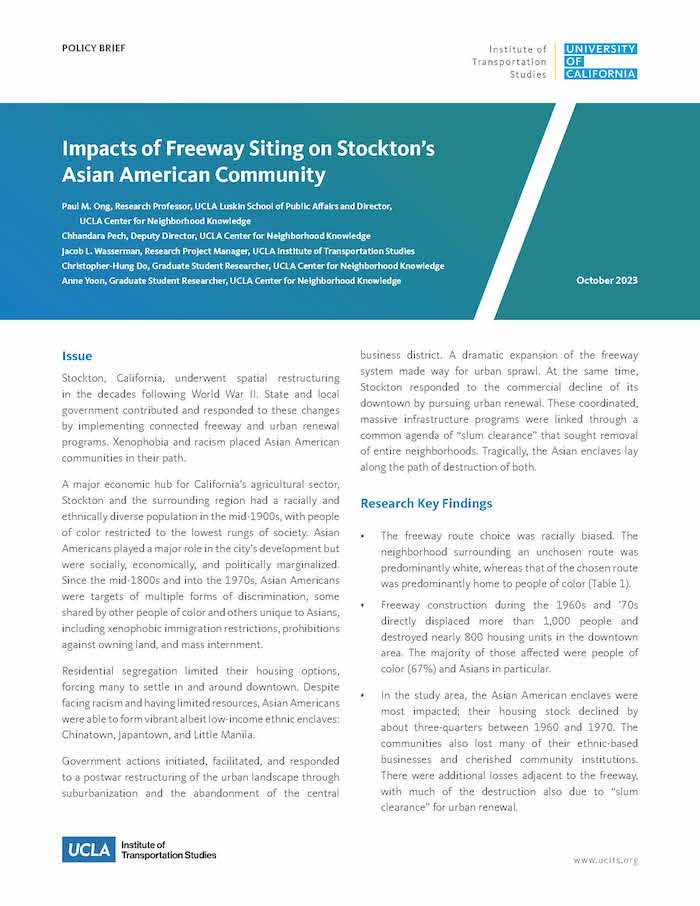Date: October 25, 2023
Author(s): Paul M. Ong, Chhandara Pech, Jacob L. Wasserman, Christopher-Hung Do, Anne Yoon
Abstract
Stockton, California, underwent spatial restructuring in the decades following World War II. State and local government contributed and responded to these changes by implementing connected freeway and urban renewal programs. Xenophobia and racism placed Asian American communities in their path.
About the Project
This project uses mixed methods to examine the systemic causes and consequences of the construction of Stockton, California’s Crosstown Freeway and of urban redevelopment for Asian Americans communities. In Stockton, state and local government implemented connected freeway and urban renewal programs. Xenophobia and racism placed Chinatown, Japantown, and Little Manila in their path. The choice of freeway route was racially biased. The neighborhood surrounding an unchosen route was predominantly white, whereas that of the chosen route was predominantly home to people of color. Freeway construction during the 1960s and 1970s directly displaced hundreds of people and housing units downtown—mainly people of color, particularly Asians. The communities most harmed were the Asian American enclaves, where the housing stock declined by about three quarters between 1960 and 1970. The losses were not only physical, as the freeway and redevelopment eviscerated once vibrant ethnic commercial hubs. Because of long-standing economic and political marginalization, Asian Americans were relatively powerless to prevent the destruction; nonetheless, they fought to build affordable housing for their people, protect and in some cases relocate cultural institutions, and support surviving ethnic businesses. In the long run, Stockton failed to revitalize its downtown, while destroying its cultural diversity.


